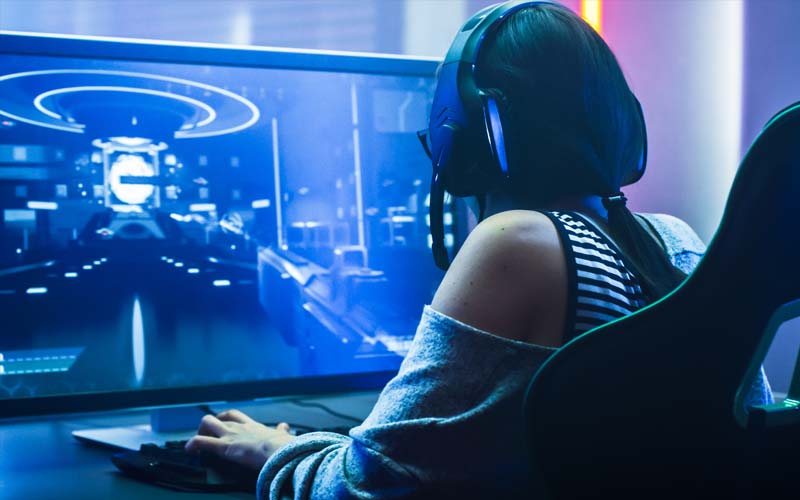
The Effects of Machine Learning and AI on Game Development
The introduction of Artificial Intelligence (AI) and Machine Learning (ML) into game development has changed the game industry, increasing both the process of creating games and the user experience. These technologies have grown from simple enhancements to essential elements that influence the game’s dynamics, character behaviour, as well as user interaction.
When we look at how AI and ML influence the development of games, it is evident that these tools are changing game development. In everything from making the non-player character (NPCs) more intelligent to creating complex game environments that have enormous potential.
This article will examine the major changes brought about by AI and ML and Machine Learning, with a focus on their advantages and practical applications to modern game development.
If you are interested in the important tools needed to develop games, check out this link for more details on game creation tools.
Enhancing Player Experience
AI, as well as M and L, has greatly improved gaming experiences by making more responsive and sophisticated gaming environments. One of the main advantages is the development of smart NPCs. They can now respond rapidly to player actions and make interactions more real and enjoyable.
AI algorithms allow NPCs to adjust their strategies according to the player’s behavior, resulting in an engaging and challenging experience. This flexibility makes sure that players are always active and are challenged each time they play, improving the enjoyment overall as well as the replayability.
Procedural Content Generation
PCG is a term used to describe Procedural Content Generation. (PCGIt ) is a different field in which AI and machine learning have had significant progress. This method allows game designers to design vast and diverse game worlds quickly.
Through the use of algorithms to generate content, game designers can create intricate environments, levels, and even scenarios without the need to design every element.
Games such as “No Man’s Sky” make use of PCG to create an endless number of worlds and ecosystems. This ensures that every player’s experience will be distinctive. This approach not only saves time but also gives players an expansive and exciting game in the world of exploration.
Realistic Simulation and Flexible Design
AI and Machine Learning help to make game environments more real and dynamic. By using advanced simulation techniques, these techniques can reproduce physical laws, like gravity and momentum, in the game’s world. This leads to more realistic motions and interactions, increasing the players’ immersion.
A game that is adaptive and powered by AI allows instantaneous changes to gameplay mechanics based on the performance of players. This means that the game is exciting, yet not a chore, providing a wide range of abilities and keeping players entertained.
Improving the quality of games and Quality Assurance
AI or ML has also transformed game testing and quality assurance methods. Testing games traditionally is lengthy and often overlooks small bugs that could impact the game’s gameplay. AI-driven testing tools test a wide range of scenarios and spot possible issues faster.
These tools analyze data from gameplay to identify anomalies, predict the behavior of players, and provide insight into how to improve game performance. This creates a more stable and polished game when it launches, improving the experience for players and decreasing the requirement for patches after release.
AI is a part of Mobile Gaming.
AI’s impact on AI is far beyond the traditional games into the field of mobile gaming. AI technology has improved many aspects of developing mobile games, such as improving security and streamlining the process of development. AI can analyse user behavior to identify and reduce threats to securityensuringor the safety of gamers.
AI-powered software automates repetitive tasks, like programming and debugging, allowing game developers to concentrate on more creative areas of design. This leads to games of higher quality being created more efficiently.
Future Outlook and Challenges
Despite the many benefits, the integration of AI or Machine Learning into game creation can present numerous issues. One of the biggest challenges is the difficulty of implementing these techniques.
The development of AI-driven systems requires specialist skills and resources. This could prove a problem even for small studios. Additionally, making sure that AI behaves ethically and realistically within games is a difficult job that requires extensive testing and tweaking.
The future of AI and machine learning in game development is promising. These technologies will increase their involvement in the development process and will enable the development of advanced and immersive games.
The advancements in AI and Machine Learning are likely to lead to more customized gaming experiences, which will allow games to adapt to the preferences of each player and their behavior in real-time. This will result in more exciting and dynamic gaming environments, which will further blur the lines between virtual and real.
Conclusion
Its impact on AI and ML in game development is significant and far-reaching. The advancements in technology have altered the way games are created, designed, and played out, providing more authentic, enjoyable, and personalized gaming.
While A, I, as well a Machine Learning, continue to advance their roles in game development will only expand, opening the way to new possibilities and innovations within the game industry.
The future of gaming is bound to be interspersed with advances in AI and ML. They promise thrilling and immersive experiences for players all over the world.



